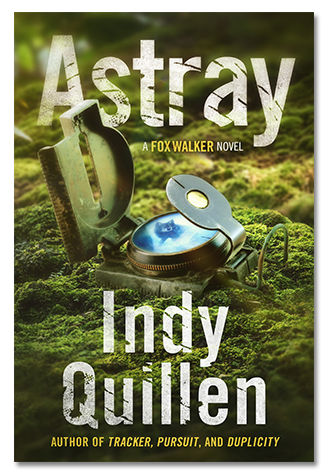What does Made From Scratch Mean?
When I was learning to cook, we used fresh ingredients and combined them to make the dishes we were going to serve. Pre-packaged meals and mixes were just becoming popular as time-savers, but were still expensive. You may remember the first frozen TV Dinners?
Then Everyone Got Too Busy.
Too busy to prepare meals, too busy to even learn to cook. Rush Rush. Grab fast food. And then the microwave was born. Now we could grab a microwave meal and zap it—blah! And who knows what microwaves do to our food?
Nowadays, we are becoming concerned about just what is in these convenient pre-packed mixes and meals. And we are discovering that they aren’t really saving us any money, or much time. More and more people are going back to using fresh organic ingredients and making dishes from scratch again.
But I’m Sharing Made From Scratch Foods for Another Reason.
I’ve spoken of this before in my blog: Preparedness: Depression Era Lessons. I believe we now have an entire generation who knows nothing about the dishes and meals that sustained our pioneers and settlers and kept our new country alive. These meals were made with only a few ingredients—whatever was on hand. I admire their ingenuity. And I hate the idea of that knowledge being lost. What if we fall upon hard times one day? What if we need to make food from nothing?
So I Decided to Share Some of the Recipes Handed Down in Our Family
Maybe you’ll want to try them for your own family. But at the very least, you’ll have them handy if you ever need them.
Homemade Egg Noodles
Ingredients:
2 Eggs
2 Tablespoons Water
Pinch of salt
Unbleached White Flour
Directions:

 Beat the two eggs, add in the water and salt. Slowly add in the flour until you have a soft dough. Turn out onto a heavily floured wood cutting board and roll out dough until thin. You will constantly be adding flour to keep it from sticking to the board or rolling pin. (Hint: I add a little salt to the flour as I’m rolling out the dough). Make sure not to add any more flour than what you have to, to keep the dough from sticking, or the noodles will be too dry. Using a sharp knife slice the dough into sections for the length you want the noodles to be, then slice the noodles to be around ¼ inch wide, depending on how wide you like your noodles. Sprinkle a little flour over the noodles and cover with a tea towel to let dry.
Beat the two eggs, add in the water and salt. Slowly add in the flour until you have a soft dough. Turn out onto a heavily floured wood cutting board and roll out dough until thin. You will constantly be adding flour to keep it from sticking to the board or rolling pin. (Hint: I add a little salt to the flour as I’m rolling out the dough). Make sure not to add any more flour than what you have to, to keep the dough from sticking, or the noodles will be too dry. Using a sharp knife slice the dough into sections for the length you want the noodles to be, then slice the noodles to be around ¼ inch wide, depending on how wide you like your noodles. Sprinkle a little flour over the noodles and cover with a tea towel to let dry.
This recipe is for a double batch. If you’re going to make noodles, why not make a large amount at one time? I like to put the extra uncooked noodles in plastic bags and freeze them for future use. They keep nicely for months and cook up just like the fresh ones.
 Traditionally in our family, whenever a chicken or piece of beef was cooked for a meal, the left-over broth (and bits of meat) were used to cook the noodles. Bring the broth to a gentle boil and slowly add the noodles, simmering until the noodles are tender. We added a little flour as they cooked to thicken the broth. We served noodles over mashed potatoes, but I think most families just ate the noodles on their own. This is what I would call a stick to your ribs type of meal for hardworking members of the family.
Traditionally in our family, whenever a chicken or piece of beef was cooked for a meal, the left-over broth (and bits of meat) were used to cook the noodles. Bring the broth to a gentle boil and slowly add the noodles, simmering until the noodles are tender. We added a little flour as they cooked to thicken the broth. We served noodles over mashed potatoes, but I think most families just ate the noodles on their own. This is what I would call a stick to your ribs type of meal for hardworking members of the family.
We ate noodles a lot in our family and no one was ever overweight, but then we were always very active out of doors. But today, my hubby and I don’t eat a lot of potatoes, pasta or heavy starch foods, so I’m experimenting with adding these noodles to our homemade chicken vegetable soup to make it extra special. But at the very least, it’s nice to know that with a egg and some flour I can make food to sustain us—if ever needed.
Have you ever made homemade noodles?



 Being outside in nature is the most basic part of who I am. Besides gaining knowledge about wildlife, I learn lessons about who I am, and surprise myself about what I am capable of achieving. Nature continually inspires me. It is a part of all my writings, no matter the genre or subject matter.
Being outside in nature is the most basic part of who I am. Besides gaining knowledge about wildlife, I learn lessons about who I am, and surprise myself about what I am capable of achieving. Nature continually inspires me. It is a part of all my writings, no matter the genre or subject matter. 




